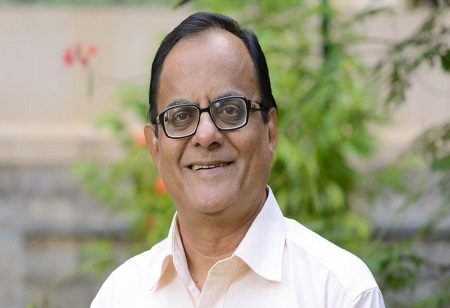
The International Conference on Green Hydrogen (ICGH-2023) kicked off in New Delhi on 5th July 2023. It provides a platform for distinguished individuals from the fields of scientific research, policy-making, academia, and industry to convene and exchange insights regarding the latest developments and emerging technologies in the green hydrogen sector. During the conference, Ajay Kumar Sood, Principal Scientific Adviser to the Government of India, unveiled the R&D roadmap to support the green hydrogen ecosystem in India. The following are excerpts from his presentation.
The successful deployment of green hydrogen requires an integrated and holistic approach and it necessitates collaboration across borders, sectors and stakeholders. For all of us, it is imperative to work towards developing comprehensive regulatory frameworks, financial mechanisms and supportive policies and thereby incentivizing investment and assuring a level playing field for green hydrogen technologies. Recently, India launched the green hydrogen mission and the advisory committee under this mission has set out a task to prepare an inter-ministerial report on required R&D to support green hydrogen ecosystem in India.
National Green Hydrogen Mission: Deliverables by 2030
In the green hydrogen mission, we have setsome targets that should be achieved by 2030. The target would be 5 million metric tons of green hydrogen annually, which will need 60 to 100 gigawatt of electrolyser capacity and 125 gigawatt of renewable energy capacity for green hydrogen generation and associated transmission network. We estimate that it will have annual emission averted to the tune of 50 million metric tons CO2 and it will create huge number of job opportunities and investment in this ecosystem.
Green Hydrogen: Technology Challenges
There are several technology challenges which include improving the cost-effectiveness in electrolysers, storage, transportation, fuel cells, industrial applications, and advanced materials. To address these, we need to enhance the efficiency as it is imperative, and this will need RE-electrolysis, as well as biomass-based pathways. Since moving to gigawatts scale installations at the same time is a crucial task,it is highly imperative to ensure safety. Hence, we need to be sure of the design for safety, standards and regulations and this should be integrated with infrastructure for storage, transport and grid.
R&D Framework under the Mission
The R&D Framework under the green hydrogen mission launched by honorable PrimeMinister looks at various aspects of Public-Private partnership framework, such as strategic hydrogen innovation partnership (SHIP). This will have dedicated R&D funds with inputs from industry and government. We will have the innovation to enhance affordability, efficiency, safety and reliability of systems, strategic international partnerships, and it will need applied research as well as the long-short research in breakthrough areas. We need innovative MSMEs and startups to be encouraged and we need to identify and support centers of excellence in various subjects and broad based adequate provision for covering different research areas.
Formulation of the R&D Roadmap
We had drafting committees of technical experts from industry and academia, which took a look at the review status of national and global R&D, identified what are the technology gaps, performance and cost targets, as well as gave recommendation for R&D road map. The key elements of recommendations are identification of high impact areas; we will have three verticals - Mission mode challenges which isup to 3-5 years, Grand challenges which are a little longer and Blue Sky research which are very challenging projects which will take little longer. We will have strategies for implementation.
Hydrogen Production
In hydrogen production, we will be looking at steep reduction in electrolyser capital and operational expenditure. We will look at improving the effectiveness and productivity of operations, with a focus on durability and reliability, design and development of electrolyser systems large-scale systems upto megawatts, including stack and balance of plant, and build capacity and keep stock of materials and critical components of electrolyser stacks.
Grand challenges projects include AEM electrolyser development, power to gas/co-electrolysis with SOEC, demonstration of biomass gasification based and compact bio-methane reformers. The Blue sky projects will start simultaneously. One should look at the sea water electrolysis to make it on a commercial scale, photo electrochemical water splitting, thermochemical water splitting and bio methane pyrolysis.
Hydrogen Storage & Transportation
The hydrogen storage and transportation phase will entail creation of efficient, safe and affordable hydrogen storage techniques for high-density storage, minimized leakage, and convenient refuelling, indegenious development of Type III and Type IV compressed H2 tanks, developing test facilities for testing of compressed hydrogen tanks, increasing the efficiency and reducing the costs of hydrogen compression and liquefaction technologies, to strengthen the pressure and capacity for new builds of 100 per cent hydrogen pipelines while reducing their costs. So, we have these material challenges to be tackled.
End Use Applications
The last part is the end use applications where we would look at improving the reliability, endurance and safety of hydrogen-fuelled jet engines, improving overall system performance for fuel cell systems in terms of power density, reliability and durability. Therefore, in the roadmap we have identified some targets with specific aspirations to achieve in a reasonable amount of time, improving technologies for the use of green hydrogen in blast furnaces/ Direct Reduced Iron processes and designing safe boilers and heat exchangers for using hydrogen/hydrogen-natural gas mixtures.
The roadmap includes the adoption of final roadmap by government, call for R&D project proposals and award of projects. Since this is a time bound approach, we lookfor cooperation from everyone which includes all the players, and sectors. We will make progress, to make India a strong hydrogen economy in coming years.
We use cookies to ensure you get the best experience on our website. Read more...